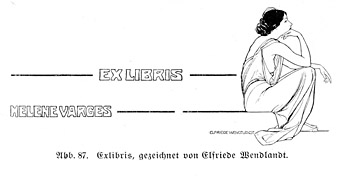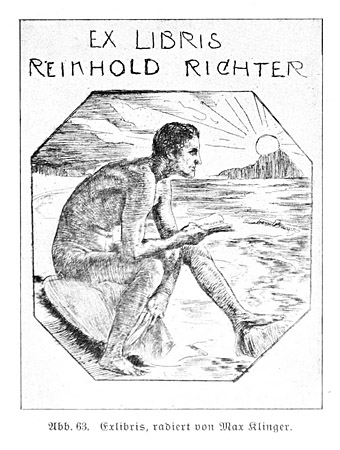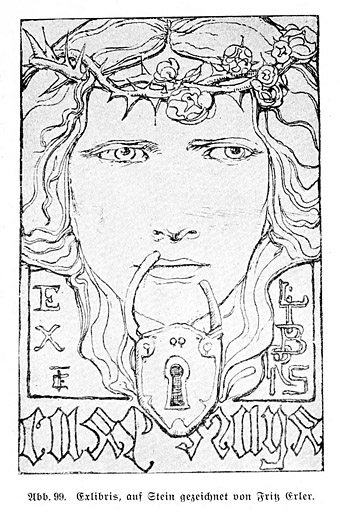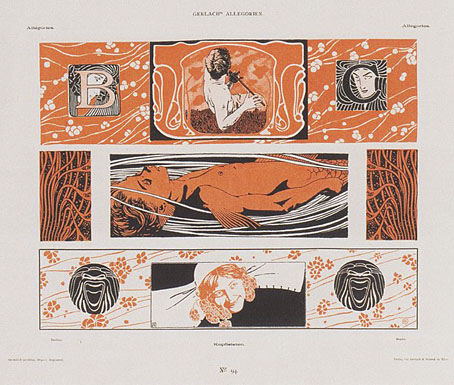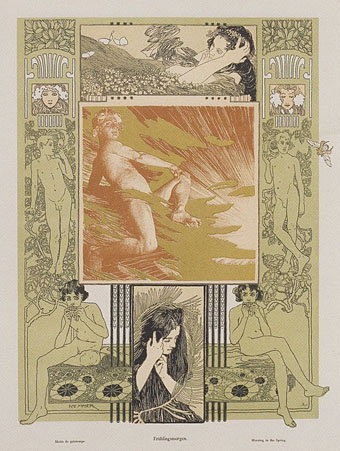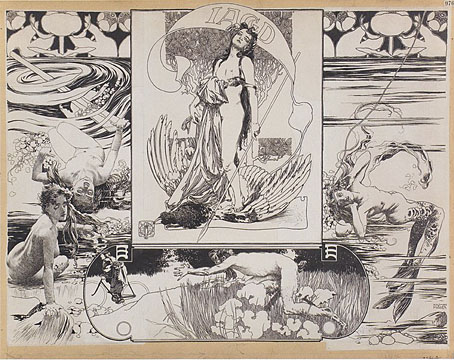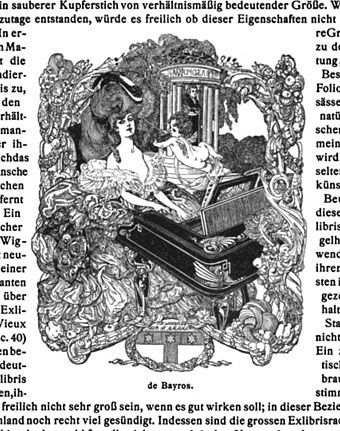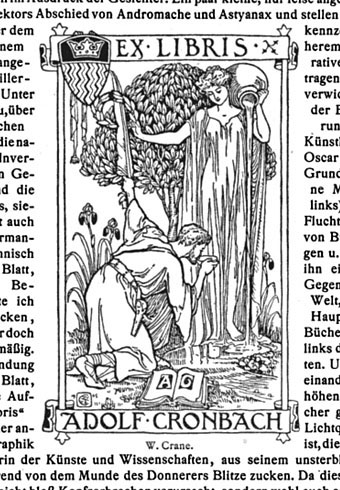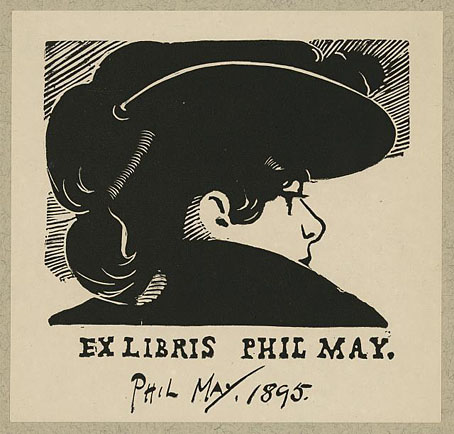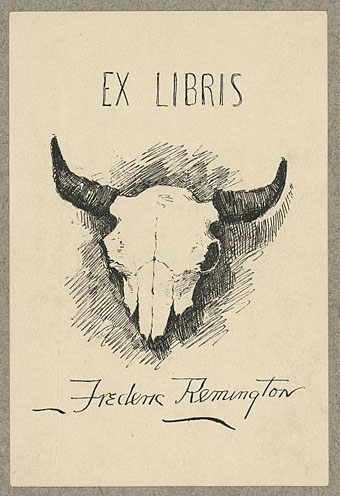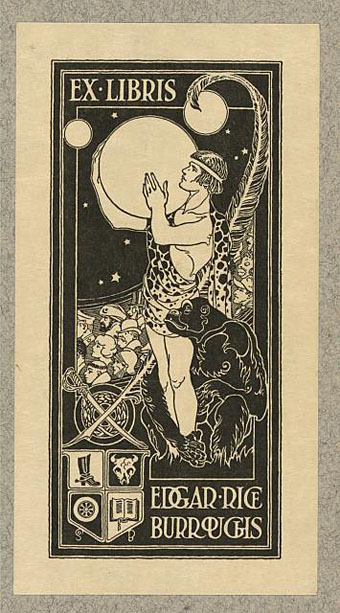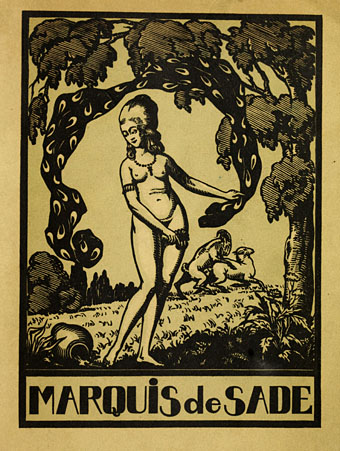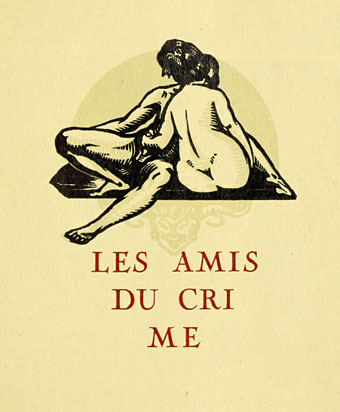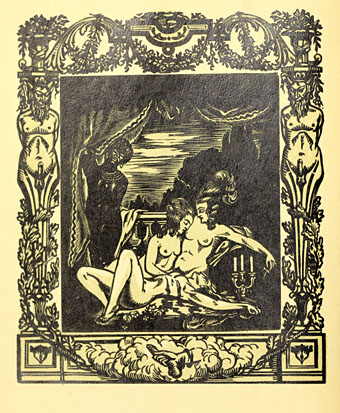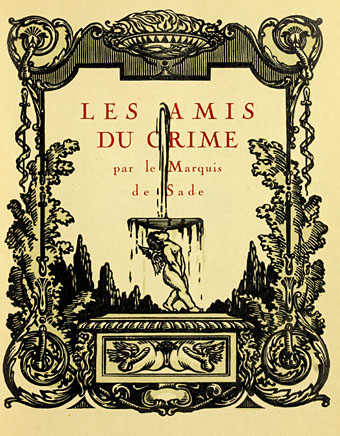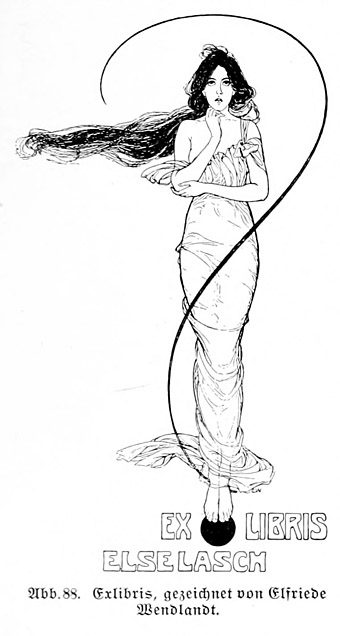
I don’t use bookplates, and don’t know anyone who does, but the conjunction between art and literature is a fascinating one. Exlibris (Bucheignerzeichen) (1909) by Walter von Zur Westen explores the history of the bookplate, and would no doubt answer some of my questions about the form if it wasn’t in German throughout, and also typeset in the semi-legible Fraktur style that used to be de rigueur for all German texts.
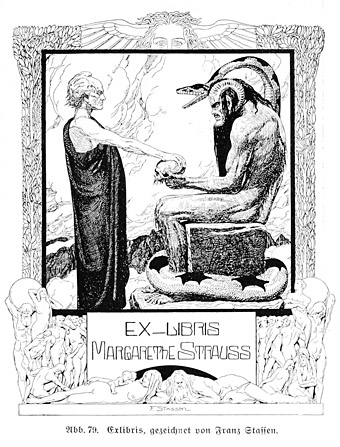
We still have the illustrations, however, and these range from woodcut engravings to contemporary works in pencil and ink, with many of the later contributions being from established artists whose names are familiar today; among the examples below are works by Symbolists Max Klinger, Fernand Khnopff and Felicien Rops. There’s also an especially fine example by Charles Ricketts. The latter are a reminder that bookplate commissions were a common thing for 19th-century artists, although their efforts are seldom seen outside collections such as this. Much of Zur Westen’s history is devoted to the German regions but later chapters cover other European countries and the United States.
